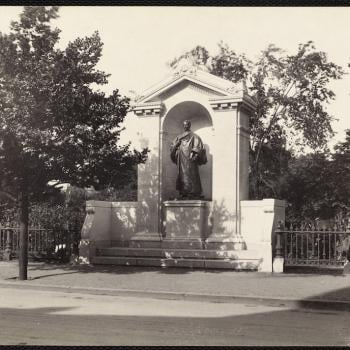
Yesterday I received in the post the Spring 2010 issue of Buddhadharma. It was a complementary copy as I’d written the “Commentary,” a generally brief “editorial” that leads off any given issue. This one they titled “Who’s in the Club?” and was my ruminations on the emergence of lay leadership within the Western Zen sangha. I led off with an anecdote relating to my currently serving on the American Zen Teachers Association membership committee. I was vaguely curious as to how sharply they had edited the piece and so pulled up my copy. Turns out not too much. Different title, a little tighter, but that was pretty much all. However, as I was looking for that article in my files I also saw that I’d written (based on other’s work, but expanded) sometime in the past. It was a brief overview of what the American Zen Teachers Association is. I believe bits and pieces of it have been incorporated into the AZTA website’s general description. But they cut a fair bit. And so as there’s little on the web regarding this fascinating institution, I thought I’d post the large essay, not that large, understand, here.
The American Zen Teachers Association
The American Zen Teachers Association began in the 1980s as the Second Generation Zen Teacher’s Group. As the name implies these were Western-born teachers who had received teaching authorization or Dharma transmission from the mostly East Asian teachers who brought their disciplines to North America in the second half of the twentieth century. All of these second-generation disciples were teaching independently. Most were of European descent and all felt a need for a peer-based group across traditions with whom they could confer as they began the process of evolution toward a Western Zen.
There are now third, fourth and even fifth generation teachers. While some lineages have maintained close affiliation with the institutions of their origination, all have begun the processes of adaptation to Western culture. For many the need for an organization like the AZTA has become increasingly important. Today we count members from nearly all Zen lineages in the West.
The AZTA strongly resists becoming a credentialing body. At the same time we are aware that as the largest such organization in existence people do sometimes look to our membership to see if someone is “real.” We caution against a too quick assumption that if someone is not a member, or their lineage is not represented that there is something amiss. There are many reasons a teacher may not wish to join an organization such as the AZTA. One area of ongoing concern for us is that with few exceptions Asian born teachers have not shown interest in this project.
At the same time someone attempting to decide whether any teacher they encounter does in fact stand within a traditional Zen lineage can apply the standards we use for our membership. Please note, however, that no one is expected to meet all the criteria listed in our membership application process.
The AZTA exists to support the ongoing work of Zen in North America. We provide a listserv, we have an archive of liturgical and other resources available to our membership, we maintain a list of member teachers and sanghas for general reference, and we sponsor an annual meeting of the membership.
This annual gathering has both informal and formal aspects. Different people find one or the other more useful. Many say the general “check-in” the most important aspect of the gathering. Others say the same for the opportunity to visit with teachers across traditions. The formal aspect is similar to gatherings of other “professional” organizations, with theme presenters, sometimes from within the teacher’s mahasangha, sometimes scholars or others who are thought to have something of value to say. There are usually smaller breakout groups attending to various areas of interest or concern.
The AZTA website is under continuous review and expansion.












